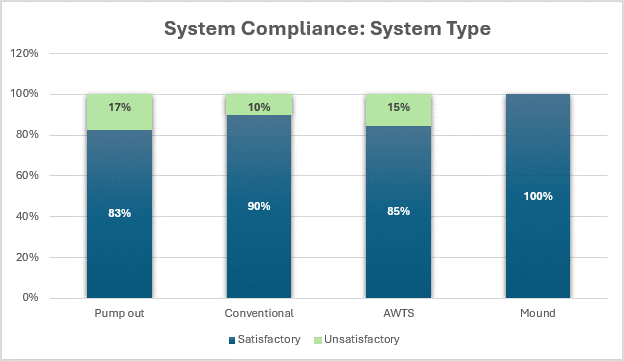In April 2023 MCC published an On-site Wastewater Management Strategy to help Council’s Environmental Health Officers (EHOs) identify areas that require immediate attention to protect public health, the environment and local businesses from failing or poorly operated septic systems.
A key objective of the strategy was to inspect all high-risk systems (approximately 520 in MCC) in the first 12 months of implementation, and it was estimated that up to 40 per cent of these systems would require follow-up action to some extent. High-risk systems were defined as being within 200 metres of an oyster aquaculture area.
Over the past few months MCC has inspected 123 high-risk systems in NAC, and James Bloxam, MCC's Coordinator On-site Wastewater Management, has provided the following report on these inspections:
"It pleases me to say that the results from the inspections in North Arm Cove (NAC) are considerably better than we were expecting. Previous proactive inspections in other areas showed a noncompliance rate of about 40%. Of the 123 systems we inspected in NAC (at 121 properties), only 13% were unsatisfactory, but none of them posed a serious or major threat to public health or the environment at the time of the inspection, and most matters were quickly and easily rectified. Property owners were particularly receptive and willing to improve their systems once problems were presented to them, which is encouraging. 
Examples of the types of noncompliance we observed include overgrown vegetation obscuring tanks and disposal areas, poorly operating irrigation systems, collection wells in need of a pump out, pump issues, and missing lids to inspection ports on septic tanks. Some systems were relatively old and unsophisticated by today’s standards, but most were performing satisfactorily under the circumstances. With the exception of one system, all the systems on our list for the area are now compliant, and steps have been taken to bring the last system into compliance in a timely manner.
What follows is a summary of the data we collected together with some graphs that I hope help with interpreting the results.
Summary of statistics:
Slightly more than half of systems (55%) were at owner occupied properties;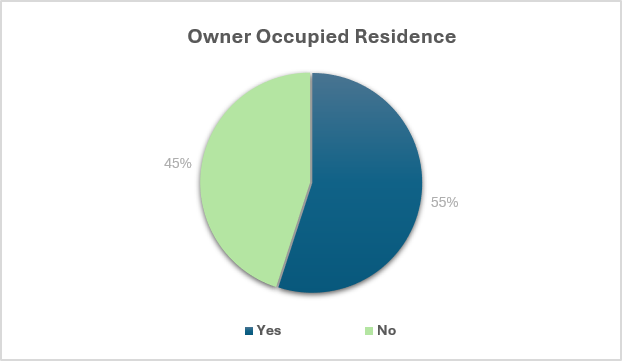
Owner occupied properties generally had higher system compliance compared to properties with absentee owners: 91% versus 81%;
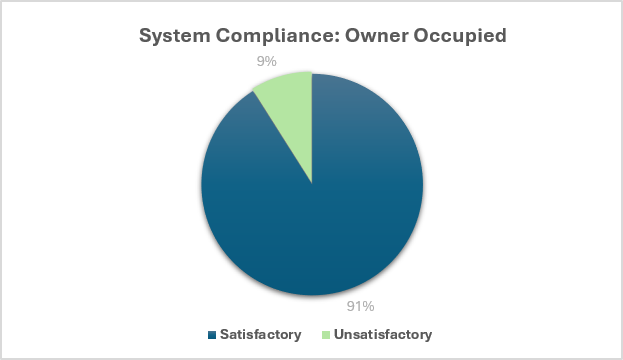

There seems to be a linear relationship between lot size and level of compliance: that is, system compliance generally increases with lot size;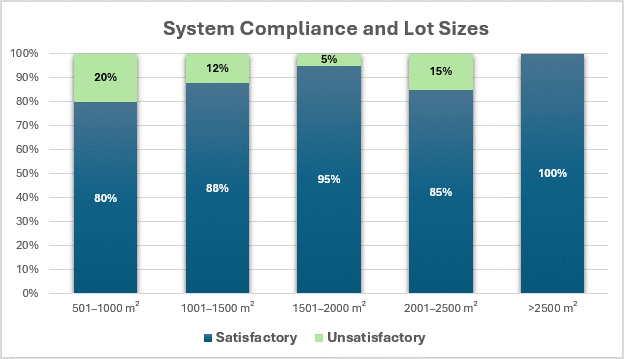
Slightly more than two-thirds of lots (68%) were 1500 m² or smaller, which is particularly inhibitive to on-site wastewater management;
Approximately two-thirds of properties had a primary treatment system (i.e., conventional septic system or a pump out), taking into consideration that some properties had more than one system; and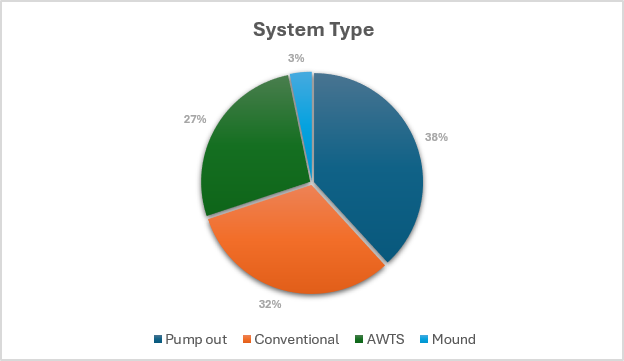
Pump out systems had the lowest level of compliance (83%) but only marginally below that observed for aerated wastewater treatment systems (85%), known in the industry as AWTSs. Conventional septic systems, which dispose of effluent into trenches and beds, had a higher level of compliance (90%), higher than we were expecting.
